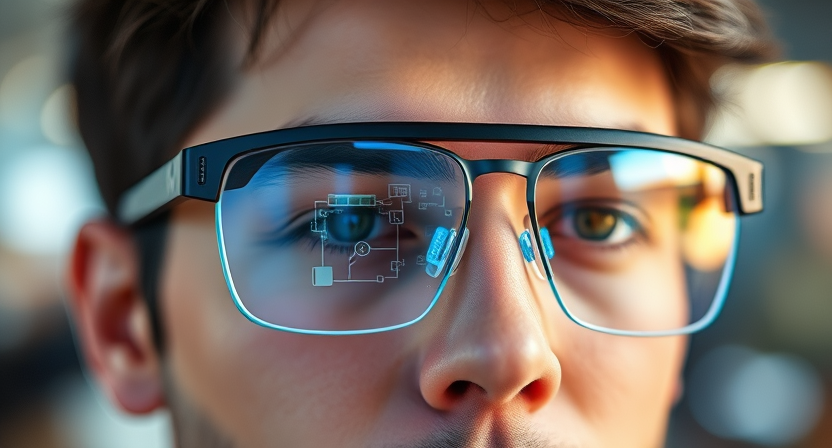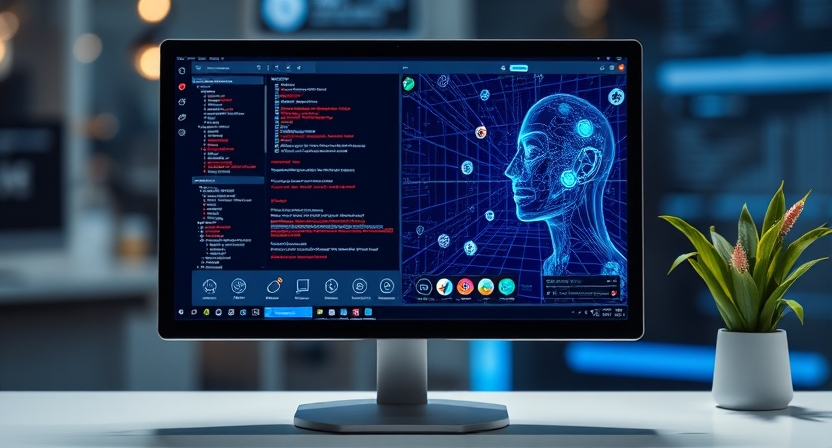Mark Zuckerberg’s Bold Prediction
In a recent announcement, Mark Zuckerberg made headlines by suggesting that smartphones may soon become obsolete as smart glasses take center stage in the realm of communication and information consumption. This bold prediction aligns with the rapid evolution of technology and changing consumer preferences that prioritize immersive and hands-free experiences. As advancements in augmented reality (AR) and virtual reality (VR) technology continue to proliferate, smart glasses are poised to become integral tools in our daily lives.
Several factors contribute to this anticipated transition. First, the increasing compactness and functionality of smart glasses present an attractive alternative to traditional smartphones. Unlike mobile phones that require constant physical handling, smart glasses can deliver notifications, messages, and access social media through unobtrusive visuals, allowing users to remain engaged with their surroundings. This seamless integration into daily activities is becoming more desirable, particularly among younger demographics who favor innovative technology that enhances rather than disrupts their experience.
Moreover, the rise of remote work, online communication, and digital content consumption has further changed the way individuals engage with technology. As consumers seek devices that provide multifaceted usability, smart glasses emerge as promising candidates, enabling features such as video calls, navigation, and app access directly in the user’s line of sight. This shift is not just a technological advance; it reflects a broader cultural movement towards enhanced interconnectivity and real-time interaction without the limitations imposed by handheld devices.
However, this transition does not come without challenges. Privacy concerns, the potential for technological overdependence, and socio-technical implications must be closely examined as society begins to embrace smart glasses as alternatives to smartphones. As Zuckerberg projects a future where smart glasses dominate, it remains crucial to navigate these concerns thoughtfully, ensuring that technological progress aligns with ethical standards and user comfort.
The Current Landscape of Mobile Phones
The evolution of mobile phones over the past three decades has been nothing short of revolutionary. Beginning as basic communication devices, the earliest mobile phones were primarily designed for voice calls and text messaging. However, the advent of smartphones transformed them into multifunctional devices, enabling users to perform a plethora of tasks from a single handheld gadget. Today’s smartphones serve as cameras, navigation tools, personal assistants, and more, making them integral to modern life.
A significant driver of this evolution has been the advancement in technology, accompanied by innovations such as touchscreens, high-resolution displays, and powerful processors. As a result, smartphones have profoundly influenced the way we communicate, work, and even socialize. The rapid proliferation of applications has transformed these devices into powerful platforms that allow for seamless integration of various services, from social media to online banking.
However, recent developments in technology raise questions about the sustainability of smartphone dominance. Emerging devices, particularly augmented reality (AR) glasses, show promise in potentially replacing the reliance on smartphones. Companies are investing heavily in the development of these smart glasses, which aim to combine digital information with the user’s real-world view. This shift is indicative of a broader movement towards more versatile and less obtrusive technology.
An analysis of recent trends reveals that younger generations are increasingly gravitating toward alternative devices and platforms, seeking experiences beyond what conventional smartphones offer. Furthermore, as consumer preferences evolve, there are signs that the smartphone market may be approaching saturation. The current landscape suggests a transition phase where smart glasses and other wearable technologies may redefine our interaction with digital information.
The Future is Smart Glasses: What They Offer
As technology continues to evolve, smart glasses are emerging as a groundbreaking alternative to traditional smartphones. Visionary companies, including Meta and Apple, are at the forefront of this revolution, developing devices that promise to transform how we interact with the digital world. One of the most significant features of smart glasses is augmented reality (AR). This technology allows users to overlay digital information onto their physical surroundings, enhancing everyday experiences. Imagine walking through a city and receiving real-time navigation prompts displayed directly on your eyeglasses, or viewing contextual data about the places and objects around you. Such capabilities not only improve accessibility to information but also enrich our understanding of the environment.
Additionally, the hands-free operation offered by smart glasses presents a paradigm shift in how individuals engage with technology. With voice commands and gesture control, users can perform tasks without needing to reach for their phones. This hands-free functionality facilitates multitasking, allowing individuals to stay connected while remaining engaged in other activities, such as driving or exercising. Furthermore, the integration of smartphone functionalities, such as notifications and calls, into smart glasses promises a more streamlined experience, reducing the need to constantly check a handheld device.
The technological advancements that are paving the way for smart glasses include improvements in battery life, display quality, and miniaturization. These developments make it increasingly feasible to incorporate powerful computing capabilities into lightweight frames that can be comfortably worn throughout the day. The potential for seamless integration into daily life cannot be overstated, as smart glasses could enable enhanced social interactions through features like facial recognition and real-time translation. Overall, as these innovative devices continue to develop, they position themselves as the next major platform for personal connectivity, challenging the existing dominance of smartphones.
Implications for the Future of Connectivity
The announced transition from smartphones to smart glasses, as introduced by Mark Zuckerberg, signifies a pivotal moment in the landscape of connectivity. This evolution could fundamentally alter our daily routines and the way we engage with technology. Unlike traditional smartphones, smart glasses have the potential to provide seamless integration of digital content into our physical environment, enabling users to interact with information in real time without the constraints of a handheld device.
One of the most significant implications of this shift is the enhancement of communication. Smart glasses can facilitate hands-free interactions, where users can access messages, notifications, and video calls while engaging in other activities. This capability may lead to a more fluid integration of our online and offline lives, diminishing the divide that currently exists with the use of smartphones. Moreover, the ability to overlay digital information onto the physical world through augmented reality (AR) will create new avenues for learning, navigation, and social interaction, significantly enriching user experience.
However, the transition to smart glasses also brings forth challenges and concerns. Privacy is a major issue, as augmented reality devices often necessitate continuous data collection and monitoring of the user’s environment. The potential for misuse of this technology, such as unauthorized recording or data sharing, raises important ethical questions. Furthermore, consumers will need to adapt to new forms of interaction, which might cause discomfort or resistance among those accustomed to traditional devices.
Overall, the shift towards smart glasses signals a significant evolution in personal technology. As society begins to embrace this new form of connectivity, it will be crucial to address the associated challenges while maximizing the benefits of enhanced communication and interaction with digital content. The future of connectivity, thus shaped by smart glasses, could redefine our relationship with technology in profound ways.



